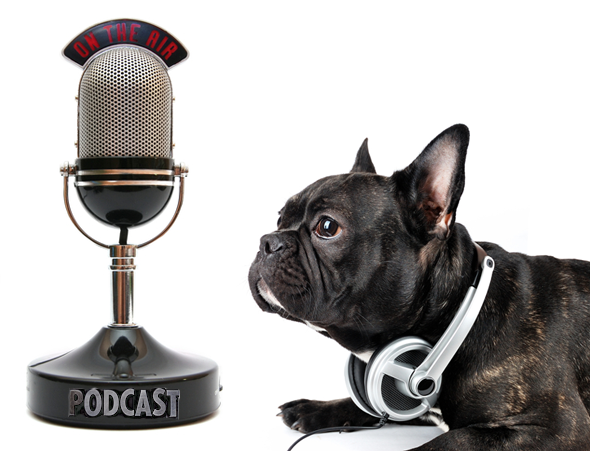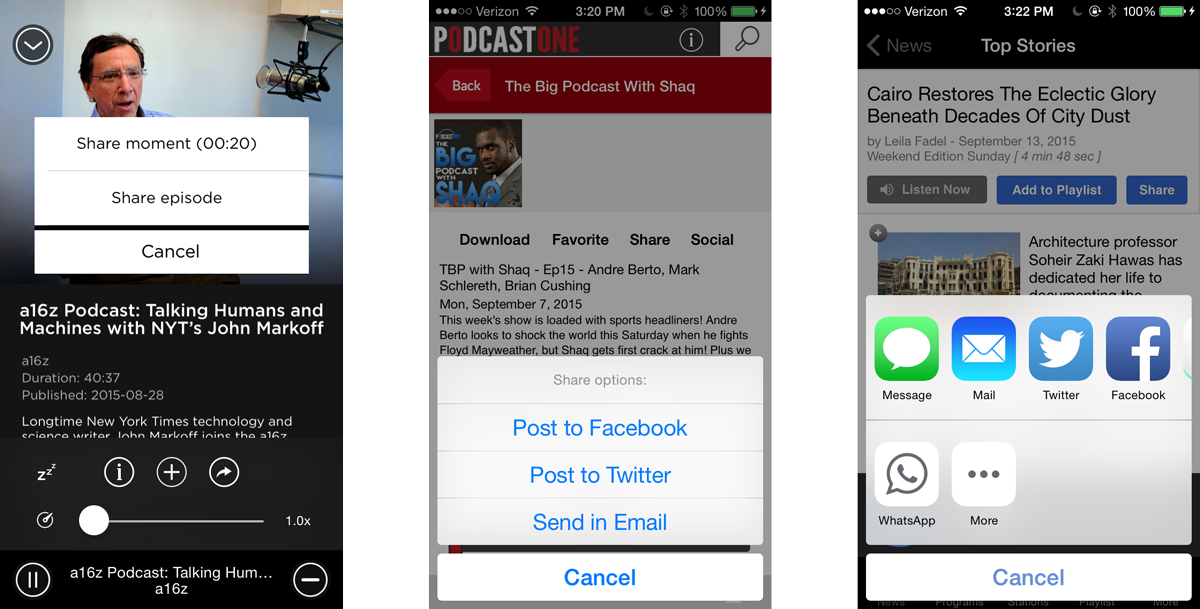 Podcasting may be going through a renaissance, but a reliance on downloads for distribution now seems like renaissance-era technology. Yesterday’s post outlined how measurability is undermined in the podcast download model and how it is holding the industry back in terms of advertiser adoption and audience understanding. Part 2 focuses on how streaming actually frees up more ad inventory that can deliver higher revenues and opportunities for greater audience engagement.
Podcasting may be going through a renaissance, but a reliance on downloads for distribution now seems like renaissance-era technology. Yesterday’s post outlined how measurability is undermined in the podcast download model and how it is holding the industry back in terms of advertiser adoption and audience understanding. Part 2 focuses on how streaming actually frees up more ad inventory that can deliver higher revenues and opportunities for greater audience engagement.
As we previewed in Part 1, podcasters can capture three key benefits from transitioning to a streaming model for content delivery:
- More measurability – they will have the type of data that brand advertisers require and better understand their audience
- More inventory – surprisingly, they will also have more ad inventory that can translate into higher revenue
- More audience engagement opportunities – audience is king in podcasting but as a recorded media, real-time engagement has high hurdles that streaming overcomes
More Measurability – Read Part 1 Here
Creating More Inventory and Capturing More Revenue
If you sell your podcast ads by episode based on projected audience, what happens when an episode goes viral? If you are selling ad inventory on a cost-per-action (CPA) basis as is common with direct response advertising, you likely will get at least some of that upside. If you are selling cost-per-mille (CPM) (i.e per thousand listener impressions) that is a favored approach by brand advertisers, you missed out. Alternatively, if your audience numbers don’t meet expectations you may have brand advertisers ask to be made whole with additional impressions.
In addition, a significant amount of podcast content has a long shelf life. Most advertisers are looking only at the immediate impression delivery shortly after the podcast is published. What about those listeners that catch up on podcasts months after initial release? These are likely free impressions for the advertisers that originally sponsored the episode. With that said, the ads very well could have promotions that are no longer available and therefore are not particularly valuable impressions.
This is the first way to increase your saleable ad inventory. You can monetize older content by using ad insertion of current ads into streamed podcasts. In this case audience is audience. It doesn’t matter whether they are listening to old or new content, the ad is delivered based on when they are listening. A switch to streaming addresses this issue for both podcasters and brand advertisers. Ads can be served in real-time and impression delivery confirmed and audited. This meets the needs of advertisers for measurability and timeliness. If there is a viral hit like Serial, then the content creator captures that upside.
This also allows a single advertiser’s campaign to be more easily spread across multiple podcasts. Brand advertisers face a challenge because few podcasts have enough impressions to fulfill a standard campaign buy. By streaming with ad-insertion, brand advertisers could access that inventory across multiple podcasts with a single buy and meet their campaign objectives.
As a side note, this doesn’t eliminate the benefit of testimonial-like live reads from podcast show hosts. Those can be insertion ads as well. Jason Calacanis from This Week in Start-ups often inserts host reads into podcasts that are recorded separately from the episode’s audio content.
Ad insertion removes the extra effort associated with editing the show audio file to manually insert the advertisement, whether it is host read or in another format. This approach can also ensure that the ad promotes a current advertiser even when listeners access older episodes. Alternatively, insertion of produced ads can complement live host reads as expanded inventory. Host reads typically are a minute or more. Adding a couple 15 or 30 second produced ads to the regular line-up of host reads could significantly help a podcast’s monetization.
Creating Audience Engagement
Let’s face it. A downloaded podcast is about as likely to drive immediate listener engagement as sending them the file on a CD. There is a complete break in actual and perceived immediacy. This is not to say those fans won’t be loyal and maybe even take some steps to demonstrate their interest on social media. However, the downloaded podcast introduces considerable friction in any attempts to drive listener engagement.

One popular podcast platform suggests all users register on the website so they can be part of the community and then subscribe to shows on iTunes. For music audio apps, the engagement doesn’t require some side-trip to the web. Everything can be done in real-time on the smartphone. With two-thirds of all podcast listening taking place on smartphones, you can see how it is not user-friendly to take them out of your app to another location to engage. Other media moved beyond this type of constraint years ago. Audience engagement friction reduces the frequency and intensity of listener-demonstrated interest and interaction. This inhibits the fan experience and undermines awareness for new listener acquisition.
For any pre-recorded media there will always be a break with actual immediacy. However, streaming can break down the barriers of perceived breaks in immediacy and offer an immediate backchannel for engagement. Streaming audio listeners can actually interact with the content, requests by hosts, and brand offers in their own real-time.
At a basic level listeners can “like,” “share” or comment on a podcast during or immediately after a podcast with a single tap on a smartphone screen. For a deeper level of engagement, interactive audio enables listeners to simply speak to answer poll questions from hosts, tweet a comment from the show, or claim an advertiser coupon. This can all be done with zero engagement friction because there is no need to pick the smartphone off the dashboard or fish it out from the bottom of a purse.
Streaming Breaks the Constraints on Podcast Market Growth
A transition to streaming can deliver more measurability, more advertising inventory, and more listener engagement. Any one of these benefits should drive a greater focus on shifting podcast audiences to streaming. The good news is that you get all three when you make the transition.
The pushback will be that it’s hard. iPhone users are a big podcast market and the Podcasts app is easy for them. Does anyone believe the Apple Podcasts app offers a good user experience? It may be sufficient for some, but is adored by none. By providing more features and a better user experience on a streaming app, many users will gladly make the switch. However, they won’t shift their behavior if they don’t know there is a choice.
Podcast apps that offer a streaming option such as Acast and PodcastOne are not heavily promoted. If podcasters want their audience to shift, they should promote it in their podcasts and on other media. They will be richly rewarded with better data, more ad inventory, and more options for user engagement when they make the transition.
Related Posts
Podcasters: Downloads are Holding You Back, Embrace Streaming (Part 1)
The Present and Future of Podcasting
Why Audio is the Quintessential Mobile Media
Creating a Great Content Interaction Experience on Mobile
Puppy Podcaster Image Source: Wix
